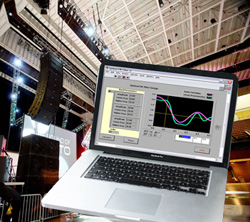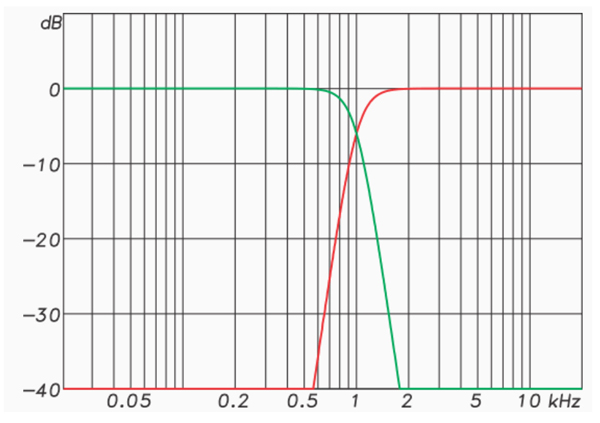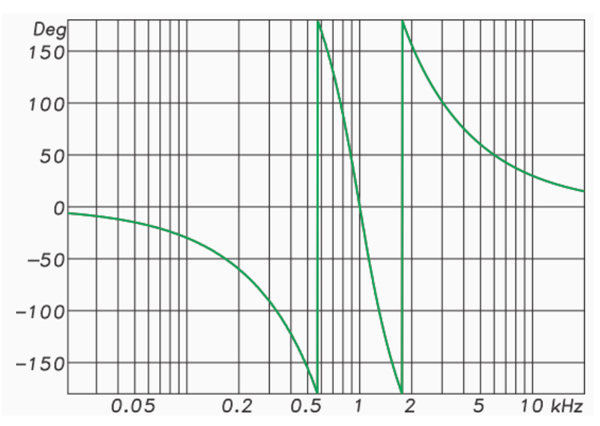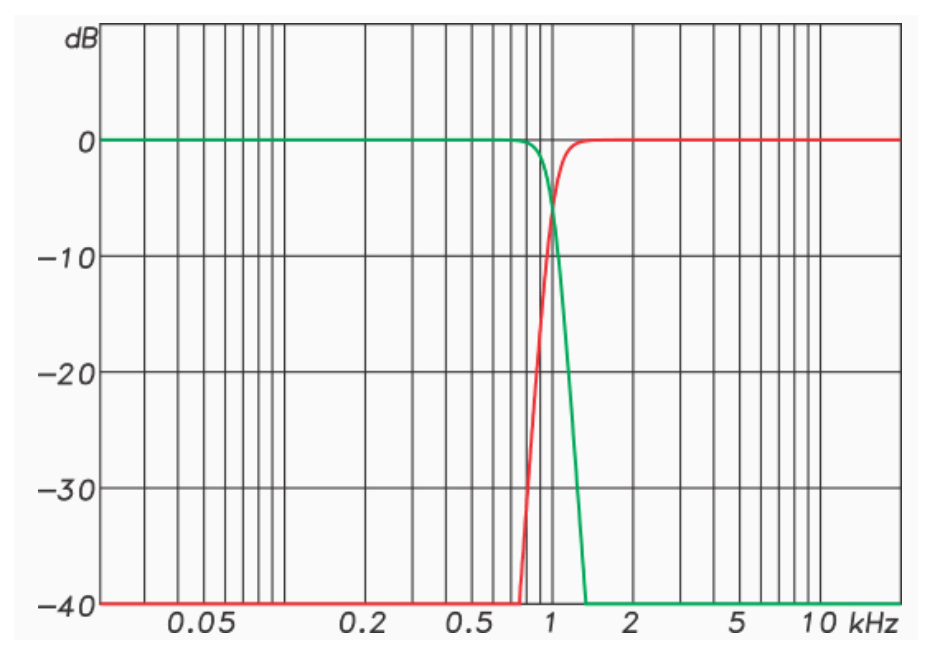
A minimum phase filter (IIR or analog) with such a steep slope would have a horrific phase response, because when its magnitude response is steep, so is its phase response (refer again to Figure 2).
This puts a practical limit on the steepness (order) of IIR crossover networks due to the “time smear” caused by the filter. Figures 4 and 5 show the magnitude and phase response of a 48 dB/octave Linkwitz-Riley IIR crossover network (HP and LP).


Figure 6 shows the magnitude response of an 8th order (96 dB/octave) FIR crossover network. Note that the filter slopes are much steeper than the IIR example. One would expect such aggressive changes to the magnitude response to be accompanied by very severe shifts to the phase response.

Figure 7 shows the group delay (GD) response of the summed filters, and Figure 8 shows the phase response with the excess GD removed. Note that the phase response is linear.


With an FIR crossover network, I can have my cake and eat it too – “brickwall” rolloff characteristics and linear phase. That’s a big deal. Of course, I paid something for linear phase. This filter pair exhibits over 20 milliseconds of delay. Delay is one of the “push backs” that keep us from getting carried away with FIR filters.
Two Types
Given the above, there are basically two types of filters used in audio work, each with multiple terms commonly used to describe them. They are:

There are obvious contradictions in these terms. For example, an IIR filter can be created in the digital domain. An FIR filter can be minimum phase. But, these are the “common usage” designators for the two filter types, useful for casual discussions. It is very important to clarify the terms when drilling down into the fine details. Which terms will I use in this article series? All of them, appropriate for the context in which they are used.
Impulse Response As A Filter
Those making loudspeaker and room measurements are familiar with the impulse response. It is measured by recording a Dirac pulse played through the system, although this technique is completely impractical for a number of reasons.
